
Japan's travel surplus in 2020 shrank to nearly one-fifth of the previous year, the first drop since the balance turned into the black in 2015, as international travel bans amid the coronavirus pandemic had a huge impact on the number of inbound visitors, government data showed Monday. The travel balance, which reflects the amount of money foreign visitors spend in Japan versus Japanese spending abroad, tumbled 79.2 percent to 562.1 billion yen ($5.3 billion) from a record 2.70 trillion yen in 2019 since annual comparable data became available in 1996, the Finance Ministry said in a preliminary report. Still, Japan's travel balance in 2020 logged black ink for the sixth straight year. In 2015, the balance saw its first black ink of 1.09 trillion yen since data compilation began in 1996, following a 44.4 billion yen deficit marked in 2014. Since 2011, when a massive earthquake, tsunami and the subsequent Fukushima nuclear crisis in northeastern Japan helped slightly widen a travel deficit to 1.30 trillion yen, the country's annual travel balance had continued to improve until 2019 with a steady increase in the number of foreign visitors. The reporting year's surplus in the current account, one of the widest gauges of international trade, fell 13.8 percent from 2019 to 17.70 trillion yen, its lowest level since 16.52 trillion yen recorded in 2015. It had increased 5.8 percent the previous year. In 2020, the goods trade balance saw a surplus for the fifth consecutive year, jumping almost eight-fold from the previous year to 3.05 trillion yen. The impact of a 15.0 percent decline in imports due to falls in prices of crude oil and other energy resources surpassed that of an 11.4 percent slip in exports amid sluggish demand for Japanese products such as cars and auto parts due to the pandemic. With the poor performance of the travel balance, services trade, which also includes cargo shipping, marked a 3.54 trillion yen deficit, following the first-ever surplus of 124.8 billion yen in 2019. It was the biggest red ink since the 3.81 trillion yen logged in 2012. The primary income balance, which reflects returns on overseas investments, showed a surplus of 20.72 trillion yen, the fourth largest since 1996, despite a 3.2 percent dip from a record 21.40 trillion yen in 2019, the first decline in four years. Many countries have imposed sweeping travel restrictions in response to the global spread of infections after the virus was first detected in China in late 2019. In 2020, 4.12 million foreigners visited Japan, which has promoted inbound tourism as a pillar of its growth strategy for revitalizing regional economies in recent years, plummeting a record 87.1 percent from 31.88 million in the previous year, according to the Japan Tourism Agency. Japan was originally scheduled to host the Tokyo Olympic and Paralympic Games last summer, but they were postponed for a year amid the pandemic. Largely consisting of tourists from China, South Korea and Taiwan, foreign visitors had kept expanding until 2019, when the figure hit a record high for the seventh year in a row. In December alone, Japan posted a current account surplus of 1.17 trillion yen, more than double the previous year's 544.9 billion yen to mark the 78th straight month of black ink. In the month, the country had a goods trade surplus of 965.1 billion yen and a services trade deficit of 343.5 billion yen. Primary income registered a surplus of 649.2 billion yen.
Create: Feb 8, 2021 Edit: Feb 8, 2021 International News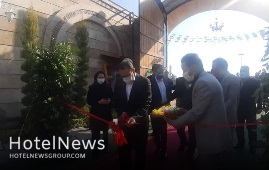
Shams ol-Emareh tourist complex was inaugurated in Baqershahr, south of Tehran province, on Wednesday on the occasion of Ten-Day Dawn (Jan. 31- Feb. 10, marking the victory anniversary of the Islamic Revolution). A budget of 370 billion rials (about $ 9 million at the official exchange rate of 42,000 rials per dollar) has been allocated to the project, Parham Janfeshan, the provincial tourism chief, addressing the opening ceremony. Constructed in an area of 11 hectares, the project is expected to create 30 job opportunities, the official added. Referring to tourism as being “advantageous” for the whole province, the official noted the tourism sector and relevant infrastructure are being developed and strengthened in all districts [and counties] of Tehran province even in low-income and deprived areas. Earlier this week, the official announced that a total of 206 tourism-related projects are scheduled to be inaugurated across the Iranian capital during the ten-day Fajr (dawn) ceremonies and celebrations. Ten accommodation centers including hotels, apartment hotels, eco-lodge units as well as tourist complexes, restaurants, and handicrafts workshops will come on stream, he explained. He also noted that a budget of seven trillion rials (about $167 million) has been allocated to the projects, which are expected to generate a total of 930 job opportunities. The mentioned projects will also add 816 beds to the hospitality sector of the Iranian capital, the official added. Hugging the lower slopes of the magnificent, snowcapped Alborz Mountains, Tehran is much more than a chaotic jumble of concrete and crazy traffic blanketed by a miasma of air pollution. This is the nation's dynamic beating heart and the place to get a handle on modern Iran and what its future will likely be. The metropolis has many to offer its visitors including Golestan Palace, Grand Bazaar, Treasury of National Jewels, National Museum of Iran, Glass & Ceramic Museum, Masoudieh Palace, Sarkis Cathedral, Tehran Museum of Contemporary Art, Carpet Museum of Iran, to name a few. The first time Tehran is mentioned in historical accounts is in an 11th-century chronicle in which it is described as a small village north of Ray. It became the capital city of the Seljuk Empire in the 11th century but later declined with factional strife between different neighborhoods and the Mongol invasion of 1220.
Create: Feb 6, 2021 Edit: Feb 6, 2021 Regional News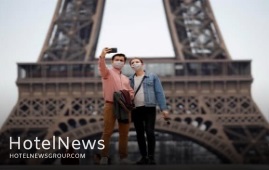
The coronavirus crisis cost the global tourism sector $1.3 trillion in lost revenue in 2020 as the number of people traveling plunged, the UN said, calling it "the worst year in tourism history". Revenue lost last year amounted to "more than 11 times the loss recorded during the 2009 global economic crisis," the Madrid-based UN World Tourism Organization (UNWTO) said in a statement, warning that between 100 million and 120 million direct tourism jobs were at risk, AFP reported. International tourist arrivals fell by one billion, or 74 percent, in 2020 with Asia, the first region to feel the impact of COVID-19, seeing the steepest decline, it added. "While much has been made in making safe international travel a possibility, we are aware that the crisis is far from over," UNWTO head Zurab Pololikashvili said in the statement. The rollout of COVID-19 vaccines is expected to "slowly normalize travel" in 2021 but many countries are reintroducing travel restrictions such as quarantines, mandatory testing and border closures "due to the evolving nature of the pandemic", the body said. The Asia and Pacific region recorded an 84 percent drop in arrivals. It was followed by Africa and the Middle East with a 75 percent drop, Europe with 70 percent fewer visitors "despite a small and short-lived revival in the summer" and the Americas where arrivals fell by 69 percent. International tourism arrivals rose by four percent in 2019 to 1.5 billion, with France the world's most visited country, followed by Spain and the US. The last time international tourist arrivals posted an annual decline was in 2009 when the global economic crisis led to a four percent drop. The UNWTO said most experts do not see a return to pre-pandemic levels of tourism activity before 2023. Open-air and nature-based tourism will see growing demand when tourism restarts, with domestic tourism also expected to be more popular, the body said. While international tourism has taken a hit from the outbreak of disease in the past, the coronavirus is unprecedented in its geographical spread. By comparison, international tourism arrivals fell by just 0.4 percent in 2003 after the outbreak of Severe Acute Respiratory Syndrome (SARS) which killed 774 people worldwide. The coronavirus has killed at least 2,176,000 people since the outbreak emerged in China in December 2019, according to a tally from official sources compiled by AFP. The tourism industry accounts for about 10 percent of the world's gross domestic product (GDP) and jobs.
Create: Feb 3, 2021 Edit: Feb 3, 2021 International News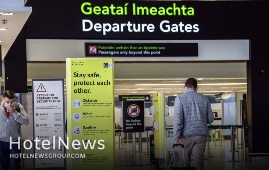
There is overwhelming support for hotel quarantine for anybody flying into Ireland as well as the continued closure of pubs and restaurants. According to the latest Red C/Business Post poll, a total of 86% of those polled agreed with the proposition that people travelling to Ireland should have to quarantine in a hotel at their own expense to reduce the risk of Covid-19 transmission. The poll also reveals that 70% of people believe that both pubs and restaurants should not be opened until most of the population has been vaccinated. This is in stark contrast to a poll last September, when there were far lower case numbers. Then a Red C poll found that 50% of people believed so-called “wet pubs” should be reopened alongside restaurants, with only 32% wanting them to stay closed. The poll also shows that resistance to taking vaccines is dropping. Last November, a Red C poll showed 74% of people were willing to take a Covid-19 vaccine but now, according to today's poll, that has increased to 85%. There is however widespread dissatisfaction with the Government's performance, with the poll showing 47% dissatisfied ahead of the 46% who said they were satisfied. The poll also shows that 56% of people believe schools should reopen in February if cases continue to decline at the current rates, while 38% disagree. Around 59% of people with children are in favour of schools reopening, but 31% are opposed. The poll also shows that a majority of people aged over 55 are satisfied with the vaccine rollout, which — the Business Post points out — may be related to the fact that over-70s are next in line to get the vaccine. There is lower satisfaction with the rollout among people aged 18-34 and 35-54, two groups who will be among the last to get vaccinated. Around 68% of Fianna Fáll supporters are happy with the vaccine rollout, but that drops to 55% among Fine Gael supporters and 29% among Sinn Féin supporters. When asked about first-preference voting intentions, 29% said they would vote Fine Gael, followed by 27% who said they would vote Sinn Féin. Just 16% said they would give Fianna Fáil their first preference vote, which is 6% down from the number of those who said they would give the party their first preference vote in the last General Election. With more people saying they would give their first preference vote to Fine Gael than said they would in the General Election, the only other party increasing in popularity since the General Election is the Social Democrats. Some 5% said they would give the party their first preference vote, compared to 3% in the General Election. Among those whose popularity has fallen since then are the Labour Party, down 1%, and the Green Party, down 2%
Create: Feb 2, 2021 Edit: Feb 2, 2021 International News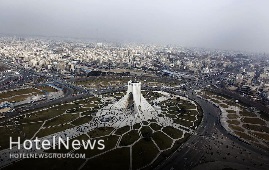
A total of 206 tourism-related projects are scheduled to be inaugurated soon across the Iranian capital on the occasion of Ten-Day Dawn (February 1-10, marking the victory anniversary of the Islamic Revolution). Ten accommodation centers including hotels, apartment hotels, eco-lodge units as well as tourist complexes, restaurants, and handicrafts workshops will come on stream, Tehran province’s tourism chief said on Saturday. A budget of seven trillion rials (about $167 million at the official exchange rate of 42,000 rials per dollar) has been allocated to the projects, which are expected to generate a total of 930 job opportunities, Parham Janfeshan said. The mentioned projects will also add 816 beds to the hospitality sector of the Iranian capital, the official noted. Hugging the lower slopes of the magnificent, snowcapped Alborz Mountains, Tehran is much more than a chaotic jumble of concrete and crazy traffic blanketed by a miasma of air pollution. This is the nation's dynamic beating heart and the place to get a handle on modern Iran and what its future will likely be. The metropolis has many to offer its visitors including Golestan Palace, Grand Bazaar, Treasury of National Jewels, National Museum of Iran, Glass & Ceramic Museum, Masoudieh Palace, Sarkis Cathedral, Tehran Museum of Contemporary Art, Carpet Museum of Iran, to name a few. The first time Tehran is mentioned in historical accounts is in an 11th-century chronicle in which it is described as a small village north of Ray. It became the capital city of the Seljuk Empire in the 11th century but later declined with factional strife between different neighborhoods and the Mongol invasion of 1220.
Create: Feb 2, 2021 Edit: Feb 2, 2021 Regional News
Global tourism suffered its worst year on record in 2020, with international arrivals dropping by 74% according to the latest data from the World Tourism Organization (UNWTO). Destinations worldwide welcomed 1 billion fewer international arrivals in 2020 than in the previous year, due to an unprecedented fall in demand and widespread travel restrictions. This compares with the 4% decline recorded during the 2009 global economic crisis. According to the latest UNWTO World Tourism Barometer, the collapse in international travel represents an estimated loss of USD 1.3 trillion in export revenues - more than 11 times the loss recorded during the 2009 global economic crisis. The crisis has put between 100 and 120 million direct tourism jobs at risk, many of them in small and medium-sized enterprises. Due to the evolving nature of the pandemic, many countries are now reintroducing stricter travel restrictions. These include mandatory testing, quarantines and in some cases a complete closure of borders, all weighing on the resumption of international travel. At the same time, the gradual rollout of a COVID-19 vaccine is expected to help restore consumer confidence, contribute to the easing travel restrictions and slowly normalize travel during the year ahead. UNWTO Secretary-General Zurab Pololikashvili said: “While much has been made in making safe international travel a possibility, we are aware that the crisis is far from over. The harmonization, coordination and digitalization of COVID-19 travel-related risk reduction measures, including testing, tracing and vaccination certificates, are essential foundations to promote safe travel and prepare for the recovery of tourism once conditions allow."
Create: Jan 29, 2021 Edit: Jan 29, 2021 International News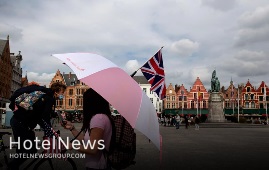
In the wake of the coronavirus pandemic, global tourism had its worst year ever in 2020, with international arrivals down 74% compared to 2019. According to the United Nations World Tourism Organization (UNWTO), the drop meant $1.3 trillion less in revenues, which is 11 times more than the drop caused by the 2009 economic crisis. The U.N. said the drop in global tourism has put between 100 and 120 million tourism jobs at risk. The outlook for a rebound is cloudy. “While much has been made in making safe international travel a possibility, we are aware that the crisis is far from over,” UNWTO Secretary-General Zurab Pololikashvili said in a statement. All world regions saw a drop in tourism, with Asia and the Pacific leading with an 84% decrease. The Middle East and Africa saw drops of 75%. Europe declined by 70%, and the Americas saw a dip of 69%. According to the U.N., 45% of its panel of experts predict a better year in 2021, while 25% say 2021 will be about the same, and 30% saying 2021 will be worse. “Looking ahead, most experts do not see a return to pre-pandemic levels before 2023,” the U.N. wrote in a news release.
Create: Jan 29, 2021 Edit: Jan 29, 2021 International News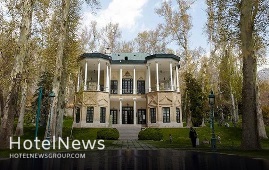
The Sa’dabad Cultural-Historical Complex on Tuesday reopened its doors to the public as some restrictions over the coronavirus pandemic have been relaxed in Tehran.According to the National Headquarters for Coronavirus Control, Tehran province is in the low-risk “yellow” zone and museums and historical sites across the province could reopen and resume their activities. Iran closed cultural heritage museums and historical sites across the country in a preventive measure amid fears of coronavirus outbreak last February, but as the coronavirus lockdown was eased, they were reopened in early May.Due to a sharp rise in the number of coronavirus infections and deaths, museums and all art and cultural centers, universities, schools, seminaries, English schools, libraries, movie theaters, mosques, beauty salons, and several other entities went on lockdown during July.The closure continued during November over the third wave of the COVID-19 pandemic. In June, Mohammadreza Kargar, the tourism ministry’s director for museums and historical properties announced that Iranian museums and historical sites have taken 600 billion rials (about $14.2 million) hit from the coronavirus outbreak.If the country was in normal condition, the museums would host over 25 million visitors, but now they have faced a huge loss as there is almost no visitor to the museums, he noted.In October, Cultural Heritage, Tourism, and Handicrafts Minister Ali-Asghar Mounesan warned that Iran’s cultural heritage and tourism would be in a critical situation if the crises caused by the outbreak of the coronavirus would be continuing.With the outbreak of the coronavirus, museums were at the forefront of closures and for several months now, they have not had any revenue from the sale of tickets, Mounesan explained.Meanwhile, the ministry is facing a shortage of funds in the field of cultural heritage, which causes problems for maintaining and preserving 34,000 National Heritage properties as well as 24 UNESCO-tagged sites, the official explained.It was estimated that museums would earn about 300 billion rials (about $7.1 million) in the first quarter of the year, but over the coronavirus pandemic they did not even come close to this figure, he added.In July, Mounesan said that revenues from museums were almost eight billion rials (about $190,000) during the first three months of the current Iranian calendar year (started March 20, 2020), a sharp decline compared to around 300 billion rials (over $7 million) in the same period last year. Earlier this week, the minister said that Iran’s tourism has suffered a loss of over 140 trillion rials (about $3.33 billion) since the outbreak of the coronavirus pandemic. Sprawled on about 110 hectares of a mountainside parkland in northern Tehran, the Sadabad Cultural-Historical Complex is used to be a royal summer residence during the Qajar and Pahlavi eras.The complex was initially established and inhabited by some Qajar monarchs in the 19th century. It has undergone further expansions from the 1920s until the 1979 Islamic Revolution. The site embraces a variety of buildings, some of which turned to be house museums showcasing a wide range of royal families’ memorabilia including lavishly-made furniture, dishware, automobiles, carpets, and miniature paintings.
Create: Jan 27, 2021 Edit: Jan 27, 2021 Regional News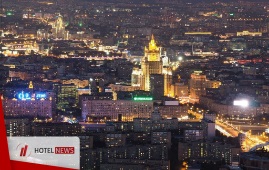
🔹 Russia's hotel revenue fell 60 percent in October, according to a study by IT company OFD Platform. 🔹 The company's experts attribute the decline in sales of hotel services in the fall to coronary restrictions and a sharp decline in tourism. 🔹 On the other hand, with the development of telecommuting methods, the volume of business trips and consequently the income of hotels has drastically decreased.
Create: Nov 2, 2020 Edit: Nov 4, 2020 International News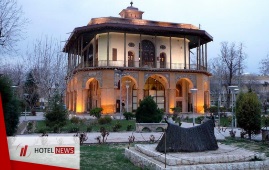
✨ The International Air Transport Association (IATA) said in a report; ⭕️ Airlines are not able to reduce their core costs. 🔹 The aviation industry's revenue is projected to fall by more than 46 percent by the end of 2021, compared to $ 838 billion in 2019. 🔹 Previous analysis of 2021 revenue showed a 29 percent decline. 🔹 The International Air Transport Association also predicts that air traffic will fall by 66% by 2020 compared to 2019.
Create: Nov 2, 2020 Edit: Nov 2, 2020 International News
🔹 Spain which has always been considered the second most visited country in the world, has seen a sharp decline in tourist attractions and revenue in recent months. 🔹 Last year (2019) and between June and August, nearly 29 million tourists from around the world visited the country. 🔹 This number decreased by just over 5 million in 2020, with 23 million and 700 thousand people.
Create: Oct 26, 2020 Edit: Oct 26, 2020 International News
"Harmatullah Rafiei" President of the Iranian Air Travel and Tourism Services Association; Half a year has passed and tourism has reached the edge of extinction, but neither proper support nor rescue policies have taken place. The travel and tourism industry in Iran normally experiences a severe decline with the beginning of autumn and the end of the year. Tourism could be saved, but they preferred to do other things, such as starting private organizations and offering projects such as "apartment service".
Create: Sep 21, 2020 Edit: Sep 21, 2020 Regional News
